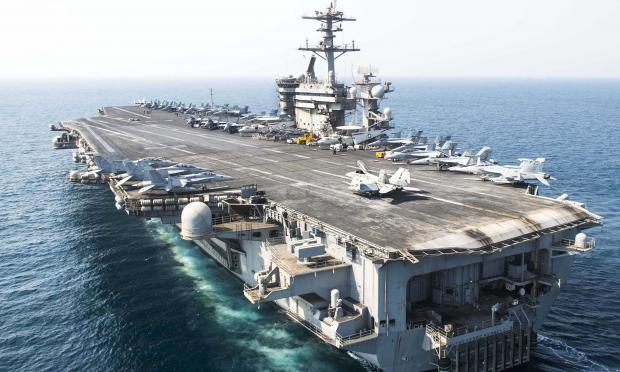Italian sources and map means alarm in the NATO armada, but also in the Greek surface units, since information about the existence of two powerful and dangerous anti-ship missiles in the arsenal of Hezbollah points to the presence of two powerful and dangerous anti-ship missiles.
The Iranian-built Noor (also known as C-802) and the Russian-built Yakhont.
How these anti-surface attack missiles are in the hands of a terrorist organization is not known, and we cannot confirm it.
These missiles pose a significant threat because of their range and their ability to target surface units.
The Noor anti-ship missile is a product of Iran's military industry. It is known for its autonomy of about 120 kilometres.
This capability allows it to target surface units at a considerable distance from the coast.
The missile is versatile, capable of engaging various targets, including ships, and has the potential to cause significant damage.
The other is the Russian-made Yakhont missile.
The Yakhont, also known as the P-800 Oniks, is a more formidable anti-ship missile in Hezbollah's arsenal.
This missile is of Russian origin and has a range of about 300 kilometers, greatly extending the range of Hezbollah's naval threats.
The Yakhont is known for its supersonic speed and advanced targeting capabilities, making it a formidable weapon in the hands of Hezbollah.
Consequences for the Ford Carrier Strike Group
The Ford Carrier Strike Group (CSG) is a critical element of the United States Navy's power projection capabilities in the Middle East and beyond.
Comprised of the aircraft carrier USS Gerald R. Ford (CVN-78) and an escort and support ship battle group, the armada provides a significant naval presence in the region.
"But the existence of Hezbollah's anti-ship missiles, particularly the Yakhont with its extended range, raises concerns for the US naval force," the Italian sources said, threatening all ships in the area, US and non-American.
The same sources stress that "while the US Navy's capabilities are technologically advanced and formidable, no warship is impervious to the anti-ship missile threat.
The potential consequences of such an attack on a strike group such as the U.S. are serious, including the infliction of casualties and the potential for escalation of regional conflicts.
To avoid any risk, therefore, U.S. units are sailing beyond the range of Hezbollah's missiles.
However, this in no way diminishes the ability of the US armada to counter a possible attack on Israel by Tehran," it concludes.
Hezbollah boasts how it could destroy the USS Gerald R. Ford (CVN-78) and its escort ships
According to a website, a scenario of an attack on the American armada was considered: "Let's look at how Hezbollah terrorists could attack a US Navy carrier in the Mediterranean, what could happen and the possible outcomes:
The maximum range of the Russian Bastion-P coastal missile complex is about 300 miles, we have to assume that the US Navy would sail its ships out of (possible) range of Hezbollah's radar.
We also assume, as this is a period of very heightened alert, and that the US Navy has rules of engagement that would allow it to shoot down any Hezbollah drone or ship coming at it with obvious hostile intent.
We have assumed that this would be 50 miles away from the US armada in this scenario. Now let's look at the Hezbollah side.
We assume we have 6 Bastion-P complexes, with 2 missiles per Transport-Erector-Launcher (TEL). So, if we can figure out where the US battle group is, 12 P-800 Oniks missiles with speeds in excess of Mach 2 could hit US surface units.
The problem is that Hezbollah's experts cannot know where to hit any of the armada's warships without knowing their position.
Although this may sound very simple indeed, when the ship does not disclose its position voluntarily, it cannot be confirmed even in "marinetraffic" for example.
Also Hezbollah has no special AFNS aircraft , nor satellites, but can use drones if they know the general direction of the armada, or use land-based radar.
However, the organisation can receive information from Iran, or worse from Russia who have satellites for example, to locate the US battle group in the Eastern Mediterranean.
A Russian satellite could provide relatively real-time information on the location of US warships, allowing manual targeting.
A U.S. naval force with such a powerful anti-aircraft "umbrella" of ships accompanying it would not be fundamentally threatened by Hezbollah.
The US will immediately launch a missile salvo of 100 SM-2, SM-6 and ESSM missiles and wipe out everything," she concludes.
But if we have this scenario the most certain thing would be that a world war has started, and the total destruction of Iran.


